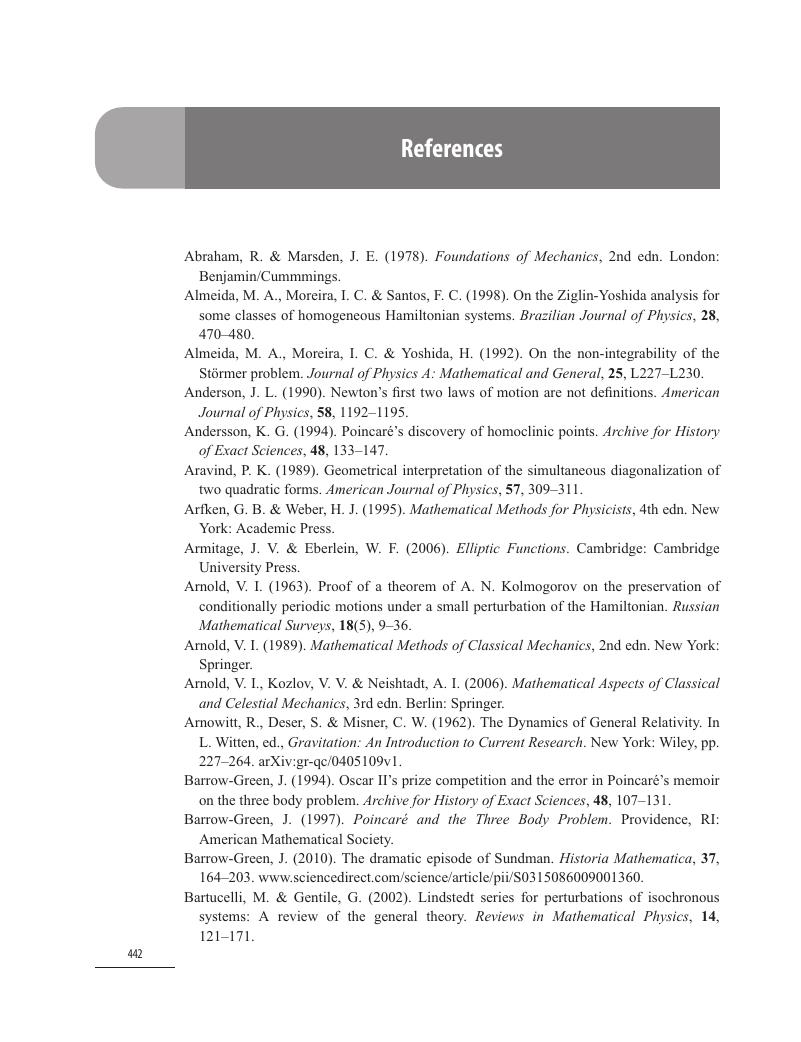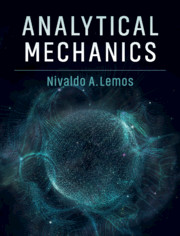Book contents
- Frontmatter
- Dedication
- Contents
- Preface
- 1 Lagrangian Dynamics
- 2 Hamilton’s Variational Principle
- 3 Kinematics of Rotational Motion
- 4 Dynamics of Rigid Bodies
- 5 Small Oscillations
- 6 Relativistic Mechanics
- 7 Hamiltonian Dynamics
- 8 Canonical Transformations
- 9 The Hamilton-Jacobi Theory
- 10 Hamiltonian Perturbation Theory
- 11 Classical Field Theory
- Appendix A Indicial Notation
- Appendix B Frobenius Integrability Condition
- Appendix C Homogeneous Functions and Euler’s Theorem
- Appendix D Vector Spaces and Linear Operators
- Appendix E Stability of Dynamical Systems
- Appendix F Exact Differentials
- Appendix G Geometric Phases
- Appendix H Poisson Manifolds
- Appendix I Decay Rate of Fourier Coefficients
- References
- Index
- References
References
Published online by Cambridge University Press: 28 July 2018
- Frontmatter
- Dedication
- Contents
- Preface
- 1 Lagrangian Dynamics
- 2 Hamilton’s Variational Principle
- 3 Kinematics of Rotational Motion
- 4 Dynamics of Rigid Bodies
- 5 Small Oscillations
- 6 Relativistic Mechanics
- 7 Hamiltonian Dynamics
- 8 Canonical Transformations
- 9 The Hamilton-Jacobi Theory
- 10 Hamiltonian Perturbation Theory
- 11 Classical Field Theory
- Appendix A Indicial Notation
- Appendix B Frobenius Integrability Condition
- Appendix C Homogeneous Functions and Euler’s Theorem
- Appendix D Vector Spaces and Linear Operators
- Appendix E Stability of Dynamical Systems
- Appendix F Exact Differentials
- Appendix G Geometric Phases
- Appendix H Poisson Manifolds
- Appendix I Decay Rate of Fourier Coefficients
- References
- Index
- References
Summary

- Type
- Chapter
- Information
- Analytical Mechanics , pp. 442 - 451Publisher: Cambridge University PressPrint publication year: 2018



